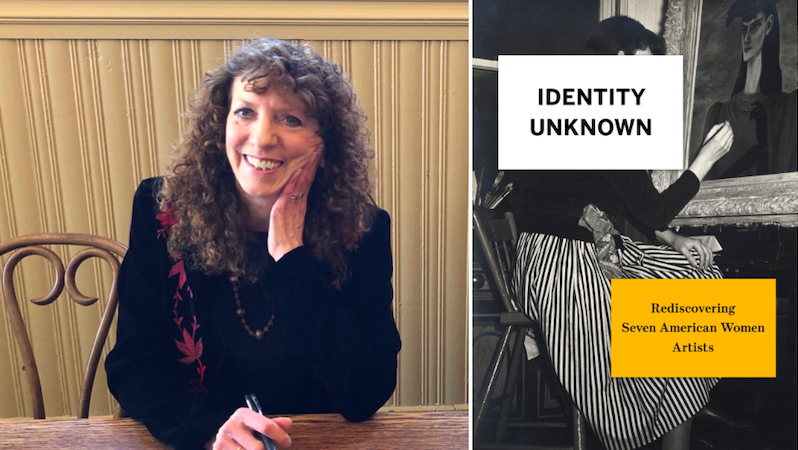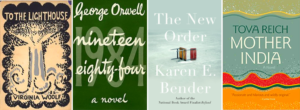
Welcome to Secrets of the Book Critics, in which books journalists from around the US and beyond share their thoughts on beloved classics, overlooked recent gems, misconceptions about the industry, and the changing nature of literary criticism in the age of social media. Each week we’ll spotlight a critic, bringing you behind the curtain of publications both national and regional, large and small.
This week we spoke to author, critic, and Booklist Editor, Donna Seaman.
*

Book Marks: What classic book would you love to have reviewed when it was first published?
Donna Seaman: What would it have felt like to open Virginia Woolf’s To the Lighthouse when it first appeared in 1927, and tumble into that rolling river of consciousness with its many contributing streams? To be carried along on its swift current of thoughts, memories, observations, sharply funny digs, and depthless sorrows? How difficult it would have been then to try to capture and decipher this whirlpool of family life, personalities, and concerns small and profound; this dazzling yet dark study of the contrast between external and internal realities, embodied so sensitively by the seemingly conventional yet deeply questioning Mrs. Ramsay, and the younger, independent artist, Lily Briscoe. Woolf’s Mrs. Dalloway, published two years earlier, would have somewhat acclimated critics to her radical narrative mode and perspective on women’s lives, but To the Lighthouse takes us even further into the mysteries of mind and body, the self and others. To this day it is startling in its intricately evocative insights.
On a completely different literary front, I recently reread Nineteen-Eight-Four. That, too, would have been a demanding assignment for a critic. I read it because this year marks the 70th anniversary of George Orwell’s dystopian novel, and I was reviewing The Ministry of Truth: A Biography of George Orwell’s 1984 by Dorian Lynskey. Orwell’s shocking, terrifying, and tragic novel is now, once again, painfully relevant.
BM: What unheralded book from the past year would you like to give a shout-out to?
DS: This question had me thinking about how much attention qualifies as “heralding.” There are plenty of books that are well reviewed, but which don’t reach nearly the readership they deserve. I suspect one title which falls into that category is Karen E. Bender’s short story collection, The New Order, which so incisively and unnervingly captures the newest forms of tyranny.
Even less heralded, and undeservedly so, is Tova Reich’s wild and daring satire, Mother India, in which she takes on sexuality, religion, and rebellion in seemingly unconnected places and cultures, from Brooklyn to Mumbai and Varanasi.
BM: What is the greatest misconception about book critics and criticism?
DS: That we enjoy being negative, that we live for the snarky takedown. The most common assumption is that critics are misanthropic, that we view every book through crosshairs, hoping for a kill. As a critic and a book review editor, I experience and observe the exact opposite. I certainly read with the hope that each book I’ve selected—there are so very many that don’t make it to that stage—will be revelatory in terms of perspective, knowledge, intent, and artistic excellence, and the critics I know feel the same way. We read with hope and anticipation; we want to be enthralled, transformed, informed, and provoked into asking questions and launching reconsiderations.
Booklovers also think that critics can spend all day reading. If only. Reading with the concentration and high attentiveness reviewing requires, analyzing the book, and writing on deadline are all performed in addition to many other competing responsibilities professional and personal. It’s always a battle to find the necessary time, focus, and quiet.
BM: How has book criticism changed in the age of social media?
DS: Once a bright little star in the media firmament, book criticism is now a supernova. Book sites have multiplied exponentially and social media amplifies their reach. Reviews are matched by author interviews and profiles, essays, and all kinds of bookish spinoffs and all are shared and reshared. Crowd-sourced sites collect vast spectrums of reader opinions, while sites aggregating book-related content from diverse sources create a perpetual churning in an ever-morphing, limitless realm of voices and viewpoints. Literary criticism itself is orbited by enthusiastic endorsements as celebrities establish online book clubs, offering even more opportunities for readers everywhere to share their thoughts and ratings. Self-publishing is flourishing as never before, creating yet another galaxy of sites and reviewers.
As the pace accelerates and the web quadrant dedicated to books expands, critics and book review editors are under increasing pressure to try to keep up on the clamorous macro level. But it always comes back down to the micro, to one reader immersed in one book; to, when the book sustains it, a deep and nurturing communion like no other.
BM: What critic working today do you most enjoy reading?
DS: I scan lots of reviews, but my deepest critical reading is often in essay collections, which I find richly inspiring. I revel in literary essays by Margaret Atwood, Toni Morrison, Francine Prose, and Zadie Smith. I also love to read art, film, theater, and TV criticism to mix things up; a book critic gets infusions of fresh language and metaphors from the likes of Peter Schjeldahl, Hilton Als, and Emily Nussbaum. I find the essays of Leslie Jamison, Kate Zambreno, and Jia Tolentino intriguing, and for criticism writ large, Ta-Nehisi Coates and Rebecca Solnit.
*
Donna Seaman is Editor for Adult Books for Booklist. She is also a member of the Content Leadership Team for the American Writers Museum, and a recipient of the Studs Terkel Humanities Service Award and the Louis Shores Award for excellence in book reviewing. Her author interviews are collected in Writers on the Air: Conversations about Books, and she is the author of Identity Unknown: Rediscovering Seven American Women Artists.
*
· Previous entries in this series ·

